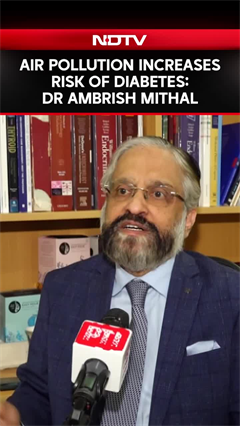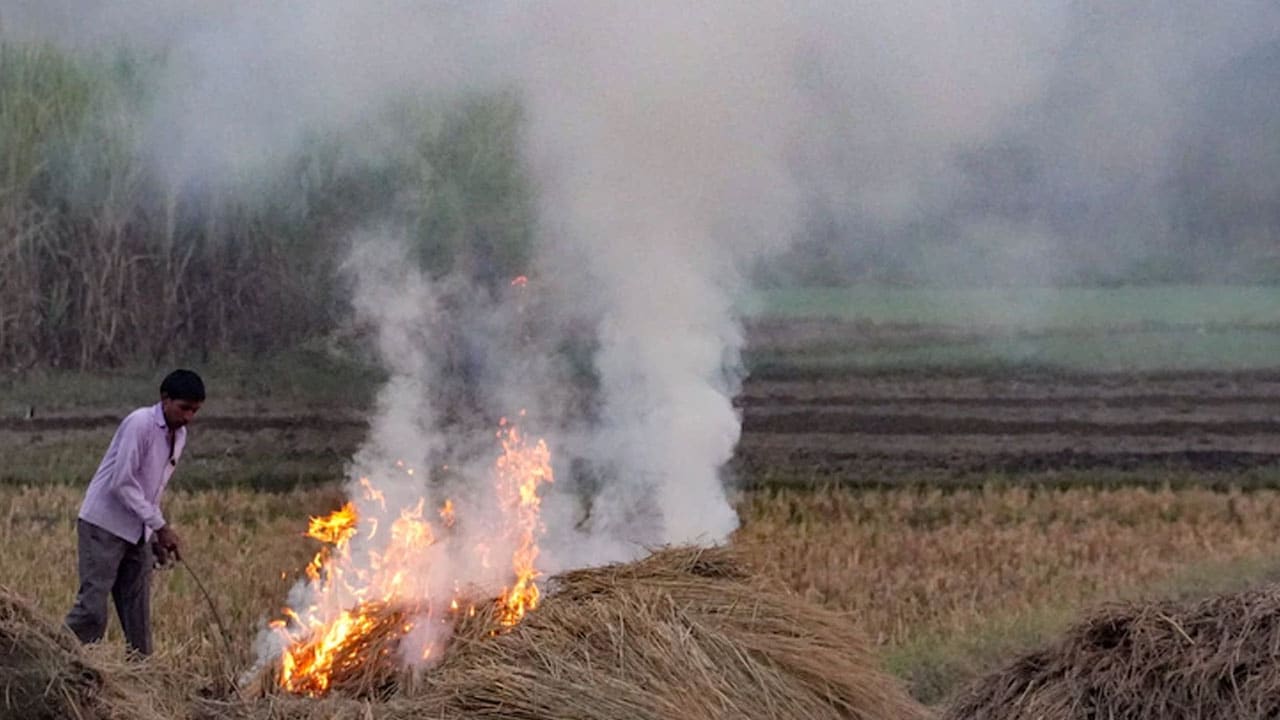- Home/
- Anti-Pollution Protesters Meet Minister, Discuss How To Improve Delhi's Air
Anti-Pollution Protesters Meet Minister, Discuss How To Improve Delhi's Air

After weeks of parents, students and residents taking to the streets over Delhi's choking air, the city government on Wednesday finally opened its doors to those leading the protest. Environment Minister Manjinder Singh Sirsa met citizen groups, environmentalists and volunteers at the Delhi Secretariat in what many attendees described as an overdue but welcome conversation.
Sirsa said the government wanted to hear directly from people who have been documenting pollution hotspots and flagging enforcement failures.
"We invited residents who actively work to keep the city clean and improve the air. We heard their suggestions and tried to understand what practical steps can be taken," he said during the meeting.
Minister Acknowledged Gaps On Ground
Sirsa admitted that "proper enforcement and coordination are still lacking" and acknowledged that bylaws and restrictions often remain only on paper. Sirsa sought citizen help in monitoring violations, especially construction dust and open burning, two issues repeatedly raised in recent weeks.
"We Live This Every Day"
Among those at the table was environmentalist Bhavreen Kandhari, part of the ongoing citizen-led movement that has seen mothers, teenagers and young children protesting across the capital.
"We appreciate that the minister reached out to mothers, citizens and students... and acknowledged that the same polluted air affecting us is affecting his own and everyone who is breathing," she told NDTV.
Kandhari underlined that people protesting are not activists by profession.
"We are different from civil society organisations. As ordinary citizens, we live the ground realities every day and can be a source of strength and insight for policymaking and enforcement," she said, also issuing a blunt reminder: "We have seen decades of meetings and roundtables yielding little or no results." Still, she said, citizens have come forward again "for the sake of all our children."
Open Burning, Weak Bylaws, Zero Coordination: Citizens List Failures
The attendees flagged the recurring gaps: unchecked open burning, bylaw violations, and agencies failing to act in sync, also calling for stronger citizen participation, including enhanced grievance mechanisms via the Sameer and Green Delhi apps, expanded volunteer networks, carpooling promotion, and ongoing public awareness campaigns.
The government, in response, said that many of these issues "are being examined for solutions" and said citizen-driven reporting and third-party monitoring would now be incorporated into its action plan.
Officials also informed that the government has already intensified ground-level action, including increased deployment of Mechanical Road Sweepers, litter pickers, and Anti-Smog Guns, along with daily water spraying and mechanical sweeping in high-dust zones. They said procurement of new sweepers and anti-smog equipment is underway to broaden coverage across the city.
Sirsa also said the government is running strict enforcement drives against C&D waste violations and continuing a crackdown on biomass and open waste burning, which officials described as one of the more stubborn contributors to winter pollution.
What's next?
While the government has said citizen inputs will feed into its pollution-control measures, no detailed plan or timeline was shared. For now, protestors say the meeting is a start, one that must translate into real inspections, real penalties and real change.
As one attendee put it after the discussion:
"The government finally called us inside. Now we'll see if they actually step outside and fix what's happening on the ground."
also read
Latest Stories
- Written by Aastha Ahuja | Thursday November 20, 2025 , New Delhi
The air quality index (AQI) is a public health tool designed to communicate air pollution levels or the quality of air in simple terms.
- Press Trust of India | Thursday November 20, 2025 , New Delhi
Health experts have flagged that the toxic air poses heightened risks to expectant mothers and their babies.
- Reported by Ishika Verma | Wednesday November 19, 2025 , New Delhi
After weeks of parents, students and residents taking to the streets over Delhi's choking air, the city government on Wednesday finally opened its doors to those leading the protest.
- Written by Mohit Bhardwaj | Wednesday November 19, 2025
Here are 5 practical tips to reduce air pollution exposure while driving, as Delhi-NCRs air quality deteriorates, with AQI levels hitting severe marks despite failed artificial rain efforts.
- Written by Rupashi Chhabra | Wednesday November 19, 2025
The invisible threat is silently damaging your eyes. Here are some easy ways to protect your eyes from air pollution.
................................ Advertisement ................................
Latest Videos
Opinion
Blog | Well Done, Delhi. You've Turned Lung Sacrifice Into A Badge Of HonourSaikat Kumar Bose
Monday November 10, 2025Till some years back, Delhiites would ask angry questions to those in power about the capitals annual tryst with toxic air. This has changed. Those in the driving seat dont see the need to answer now.
Opinion | Why Indians Have Just Given Up On Air Pollution CrisisTanushree Ganguly
Friday December 20, 2024While some may argue that people in Delhi are now more aware of air pollution than they were a decade back, my rebuttal would be that awareness does not mean that people are concerned.
Opinion | You Must Outrage Over Filthy Air More Than Once A YearJyoti Pande Lavakare
Tuesday December 10, 2024Delhi welcomed us with monsoon rains and mangos. We were home. Fast forward a couple of years, in the winter of 2012, I found myself in denial about something other parents, mostly expats, were calling toxic air.
Opinion | Delhi's Air Pollution Situation Is Like A Bad MarriageNishtha Gautam
Friday November 22, 2024On a good day, such as today, the AQI reading in Delhi is 407. We are jubilant at the sickly sunshine trickling through the slightly dissipated smog. At least its not 1600.
दिवाली... पराली... सियासी जुगाली!Ashwini kumar
Monday November 18, 2024दिल्ली-एनसीआर में प्रदूषण का समाधान तो आज तक मिला नहीं. हर साल चिंतित होकर हम-आप सांसों की तकलीफ के साथ-साथ दिल और ब्लड प्रेशर के मरीज भी क्यों बनें?


















